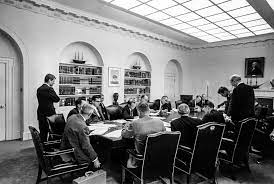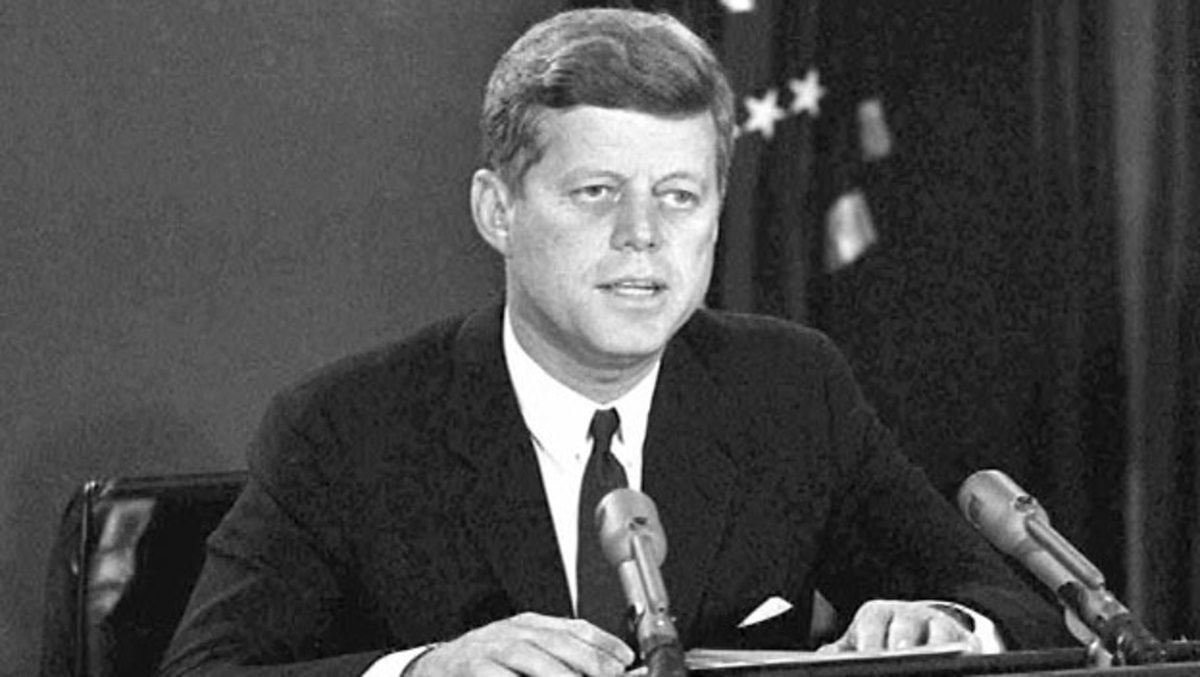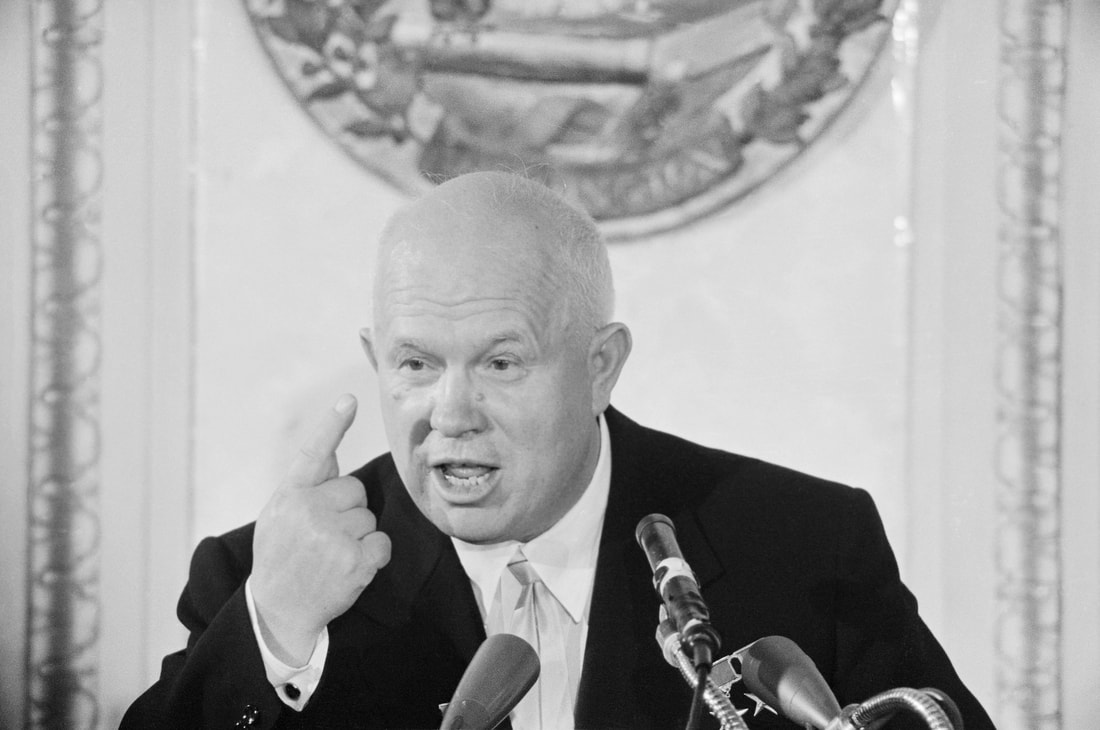https://www.jfklibrary.org/learn/about-jfk/jfk-in-history/cuban-missile-crisis
https://www.history.com/news/cuban-missile-crisis-timeline-jfk-khrushchev
https://www.history.com/news/cuban-missile-crisis-timeline-jfk-khrushchev
October 14th - Those aren't soccer fields
|
The arguably 13 scariest days in American history began on October 14,1962, when a US U-2 spy plane, piloted by Major Richard Heyser, photographed several missile sites, missile transportation, and tanks. The original thought had been that the Cubans were building new soccer facilities which didn't make much sense considering their main sport was baseball. The newly found intelligence was brought back to Kennedy and the CIA to be discussed the following day.
|
Map of Soviet Nuclear Technology in Cuba
|
October 15th-21st - It's the Soviets!
|
October 15th began with the CIA's investigation into the photographs. After reviewing the photographs it was clear what they were dealing with, a Soviet led missile supply. Through the hundreds of photographs taken the CIA discovered launchers, missiles, and transport trucks, which led them to assume they were actually building missile launch sites. The information was relayed to Kennedy as he met with Ex-Comm to discuss what the proper response to a nuclear threat was. Kennedy received three different options from Secretary of Defense Robert McNamara. The three options are: meet and discuss the situation with Fidel Castro, an airstrike on the newly built nuclear launch sites in Cuba, or a naval blockade around Cuba. Kennedy feared the option of a airstrike due to risk of a Soviet counter attack on another ally. Kennedy believed the best decision was to form the naval blockade around Cuba. They have to be careful with advertising it as a blockade, due to a blockade being an act of war. They release it to the public as a quarantine of Cuba.
|
Kennedy's Meeting with Ex-Comm
|
October 22nd - "18 minutes with JFK"
|
All homes across America could turn on their television that evening and be welcomed to a display of John F. Kennedy. Kennedy surprised all Americans with hard evidence of Soviet presence in Cuba, along with the new launch sites. He stated that the American Navy would quarantine Cuba and block off all possible Soviet weaponry into Cuba. He finished his speech demanding that the Soviets withdraw their missiles from the island. At the same time as the speech, U.S. ambassador Foy Kohler delivered a letter to Khrushchev, the first Soviet Secretary. In a section of Kennedy's letter he writes, "the one thing that has most concerned me has been the possibility that your government would not correctly understand the will and determination of the United States in any given situation, since I have not assumed that you or any other sane man would, in this nuclear age, deliberately plunge the world into war which it is crystal clear no country could win and which could only result in catastrophic consequences to the whole world, including the aggressor." By saying that he said that even if Russia was to launch a Nuclear attack it wouldn't just be America suffering casualties. Pretty much stating that the Americans wouldn't hesitate to launch a full counter attack.
|
Photograph of Kennedy giving his speech
|
October 23rd- 25th - Soviet Response
|
Khrushchev didn't hesitate to respond. On October 23rd he responded and denied the plea for the Soviet missiles to be removed. He argued the missiles were only there as a defensive measure. Kennedy didn't believe that the missiles were only intended as a defensive measure. Kennedy's argument was that the Soviets had placed the missiles in Cuba secretly and started the crisis themselves. This angered Khrushchev, and in a response on the 24th he wrote, "“You are no longer appealing to reason, but wish to intimidate us." While the letters back and forth are occurring the Soviets start to encroach upon the U.S blockade. There a Soviet submarines along with transport ships which make the U.S think they are preparing to breach the blockade. Thankfully during the sending of letters the ships are recalled except for one, a Soviet oil tanker. The tanker was approached by two U.S battle ships, but was let through due to the tanker not carrying any contraband. If the U.S were to have seized the ship it would have likely led to an all out war, so Kennedy told them to allow the tanker to pass through to Cuba.
|
Nikita Khrushchev, leader of the Soviet Union
|
October 26th- 28th - Resolution
|
October 26th could have been the day to end all. The day began with Cuba's Fidel Castro pleading with Khrushchev to launch a nuclear strike on the United States. Thankfully Khrushchev denies the plea of Castro and instead sends a letter to the U.S president. Khrushchev's letter is a plea to the president to help him deescalate the situation and avoid an all out thermonuclear war. Sadly this letter was almost the last sign of peace, as on October 27th, U.S pilot, Major Rudolf Anderson is flying a U-2 spy plane over Cuba when he was targeting and shot down over Cuba. Assistant Secretary of Defense Paul Nitze says, “They’ve fired the first shot,” and President John F. Kennedy remarks,“We are now in an entirely new ball game.” War seemed nearly unavoidable but Kennedy was able to come to the correct realization. Kennedy realized that it wasn't actually Khrushchev who had ordered the destruction of the U.S spy plane. The day ended in a deal being reach between the United States and the Soviet Union. The deal was for the United States to remove its missiles from the Russian border in Turkey as well as not attack Cuba after the Soviets retreated. The deal is accepted on the 28th and Khrushchev orders the tear down and removal of Soviet weaponry in Cuba. In the eyes of Americans Kennedy is now seen as a hero who didn't back down to the pressure and stood his ground to the Soviets.
|
Meeting between Kennedy and Khrushchev post Missile Crisis
|
Work Cited
“Cuban Missile Crisis.” Cuban Missile Crisis | JFK Library, https://www.jfklibrary.org/learn/about-jfk/jfk-in-history/cuban-missile-crisis.





